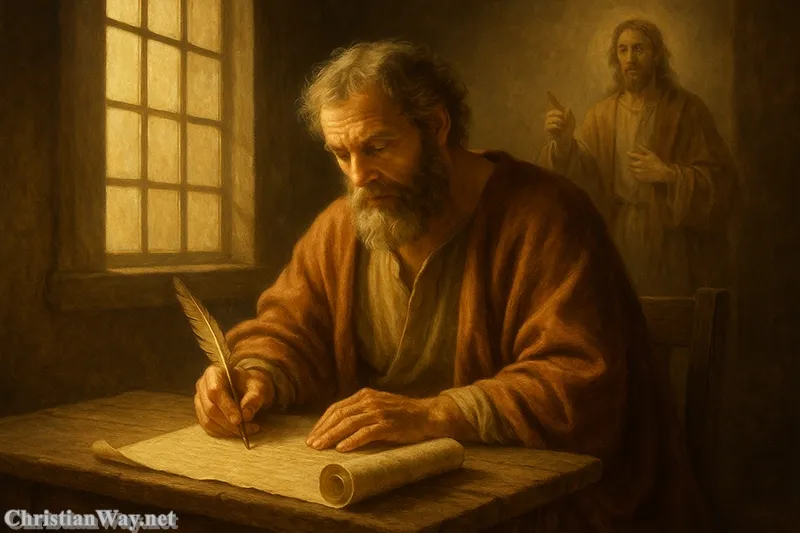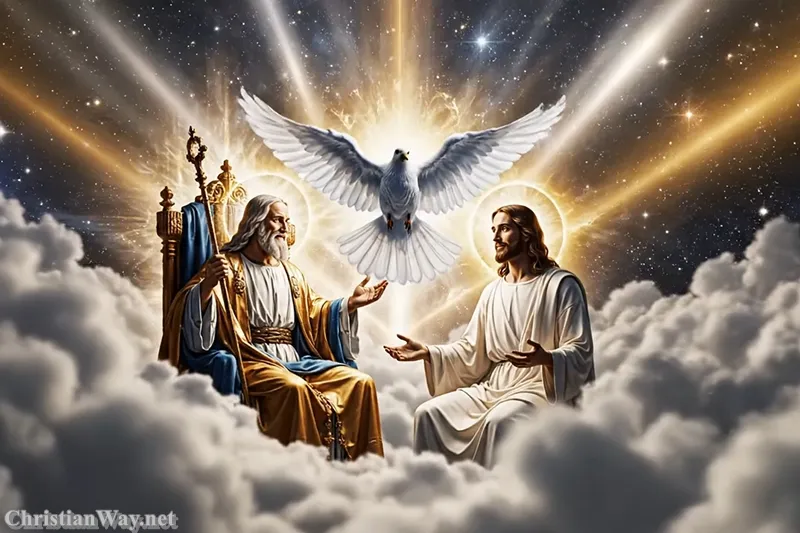Dear friends in Christ,
Every Christian heart, when it turns toward the Cross, stands before the deepest mystery of love. The Crucifixion of Jesus is not merely an event recorded in history — it is the moment when eternity entered into human pain, when the Creator allowed Himself to be wounded by His own creation, and when the infinite mercy of God took the shape of a suffering man.
For those who look upon the Cross, faith is not an abstract doctrine but a trembling encounter with love that bleeds. The Crucifixion of Jesus Christ reveals what words alone could never say: that God so loved the world He gave His only Son, not simply to teach or to heal, but to die for us — to redeem, to forgive, and to make all things new.

The story of the Cross is not meant to be observed from a distance. It is meant to be entered into. In every wound of Christ, we find our own sins and sorrows mirrored — yet also, our salvation. This reflection, therefore, is not only a remembrance of what happened on Calvary two thousand years ago but an invitation to let the love that once hung upon that wood take root in our own hearts today.
The Path to Calvary: Obedience unto Death
The Gospels tell us that Jesus, after being condemned by Pontius Pilate, was scourged, mocked, and forced to carry His Cross through the streets of Jerusalem. Each step was heavy with both pain and purpose. “He humbled Himself and became obedient unto death, even death on a cross” (Philippians 2:8).
That obedience was not resignation but love — love for the Father and love for us. Every lash, every thorn, every fall beneath the weight of the wood was freely embraced. The Lord Jesus Christ walked the Via Dolorosa, not because He was powerless, but because He was merciful. He was carrying not only the Cross, but the entire burden of human sin, that through His suffering, we might find peace.
Simon of Cyrene and the Fellowship of Suffering
Along the way, Simon of Cyrene was compelled to help carry the Cross. Though at first a bystander, Simon’s life was forever changed. In his struggle beside Christ, we see a sign of all who would follow Jesus — those who, in their own sufferings, share the weight of the Cross. The Lord transforms even reluctant hearts into companions of grace.
When we take up our crosses daily, we join that sacred procession. The Crucifixion of Jesus becomes not a distant tragedy but a present mystery that touches every human story of pain, loss, and sacrifice.
Golgotha: The Hill of Redemption
When they reached the place called Golgotha — “the Place of the Skull” — the soldiers nailed Jesus to the Cross. The Gospels recount this moment with solemn restraint: “And when they came to the place that is called The Skull, there they crucified Him” (Luke 23:33). Few words could bear the weight of such horror, yet within that silence, heaven was speaking.
As the nails pierced His hands and feet, the Word who created the universe allowed Himself to be bound by His own creatures. The very hands that formed Adam now stretched wide to embrace a fallen world. Each hammer’s blow echoed the cry of human sin, yet also the unbreakable “Yes” of divine love.
The Mockery and the Mercy
The crowd mocked Him: “If You are the Son of God, come down from the Cross!” But the Son of God did not descend, for His power was revealed not in escape but in endurance. The rulers sneered, the soldiers gambled for His garments, and even one of the criminals joined in the derision. Yet amid the cruelty, one voice rose in faith — the good thief who said, “Jesus, remember me when You come into Your kingdom.”
And Jesus replied, “Truly, I say to you, today you will be with Me in paradise” (Luke 23:43). Even in agony, the Redeemer’s heart overflowed with mercy.
The Seven Last Words: The Voice of Love on the Cross
In the final hours of His earthly life, Jesus spoke seven sayings — each one a flame of divine truth amid the darkness of suffering. They reveal the full measure of His heart and the meaning of the Crucifixion of Jesus Christ.
1. “Father, forgive them, for they know not what they do.” (Luke 23:34)
Here love forgives while the nails are still fresh. Jesus does not curse His executioners but prays for them. In that moment, He redefines justice itself — not as vengeance but as mercy.
2. “Today you will be with Me in paradise.” (Luke 23:43)
To a dying thief, He opens the gates of heaven. Salvation is not earned but received through faith and repentance, even in one’s final breath.
3. “Woman, behold your son… behold your mother.” (John 19:26–27)
Looking upon His mother and the beloved disciple, Jesus forms a new family — the Church. Mary becomes the mother of all who believe, standing beneath every Cross where her children suffer.
4. “My God, My God, why have You forsaken Me?” (Matthew 27:46)
These words, drawn from Psalm 22, reveal the mystery of the Son entering into the deepest human anguish — the seeming absence of God. Yet even in desolation, He prays. In our own darkness, His cry becomes ours, and His faith sustains ours.
5. “I thirst.” (John 19:28)
The Lord of living water thirsts — not only for drink, but for souls. It is the thirst of divine love longing for our return.
6. “It is finished.” (John 19:30)
This is not the cry of defeat, but of fulfillment. The work of redemption is complete; sin and death have met their conqueror.
7. “Father, into Your hands I commend My spirit.” (Luke 23:46)
The final word is trust. Jesus surrenders His life back to the Father, turning death itself into an act of love.
The Earth Trembles: Signs of a New Covenant
At the moment Jesus breathed His last, the Gospels tell us that “the curtain of the temple was torn in two, from top to bottom” (Matthew 27:51). This was no mere accident of nature. The veil — which separated the Holy of Holies from the people — was rent apart, signifying that through the Crucifixion of Jesus, access to God was now open to all.
The earth shook, rocks split, and even the centurion who oversaw the execution confessed, “Truly this was the Son of God!” (Matthew 27:54). Heaven and earth bore witness to the birth of a new creation.
The Blood and Water from His Side
When the soldier pierced His side, “immediately there came out blood and water” (John 19:34). The early Church Fathers saw in this the symbols of Baptism and the Eucharist — the sacraments through which the life of the Crucified flows into the souls of believers. The Church herself was born from the open heart of the Savior, as Eve was formed from the side of Adam.
The Cross in Christian Faith and Life
For the early Christians, the Cross was not merely an emblem of suffering but a sign of victory. What once was a symbol of shame became the banner of salvation. Saint Paul proclaimed, “We preach Christ crucified… the power of God and the wisdom of God” (1 Corinthians 1:23–24).
To believe in the Crucifixion of Jesus Christ is to see love where the world sees failure. It is to recognize that through suffering freely embraced, redemption is born. Every generation of believers has found in the Cross both the challenge and the consolation of faith.
The Cross in Daily Life
Each of us is called to carry our own cross — not as punishment, but as participation in Christ’s redeeming love. When we forgive the unforgivable, when we love amid rejection, when we endure suffering with trust, we are standing beneath the same Cross and sharing in its grace.
Saint Francis of Assisi once wept before the crucifix, saying, “Love is not loved.” His tears remind us that to truly gaze upon the Cross is to be changed by it. We cannot remain indifferent before such love.
The Power of the Cross Through the Ages
From the martyrs of the early Church to the quiet faith of Christians today, the Cross has been the sign by which the world knows Christ’s followers. Cathedrals were built in its shape; homes and hearts have been sealed with its sign.
In times of war, famine, sickness, and despair, believers have looked to the Crucifixion of Jesus as the surest anchor of hope. For in that moment of utter darkness, the dawn of resurrection was already rising. The Cross is both the tree of death and the tree of life — the place where sin died and grace began to reign.
Saints and the Mystery of the Cross
Saint Thérèse of Lisieux wrote, “To love is to suffer and to rejoice in suffering for love.” Saint John of the Cross saw in the Crucifixion the ladder to heaven. Saint Teresa of Ávila urged her sisters never to flee from the Cross, for there they would find the Beloved.
These voices across centuries echo the same truth: that the Cross is not an end, but a beginning — the doorway to resurrection and eternal life.
The Crucifixion and the Unity of Christians
Across all branches of Christianity — Catholic, Orthodox, Protestant, and Anglican — the Cross remains the central sign of faith. Though our traditions may differ in expression, all believers meet at the foot of Calvary. Here, denominational walls fade, and only love remains.
When we kneel before the Crucified Lord, we stand on common ground. The wounds of division can only be healed by the wounds of Christ.
The Cross and the Modern World
In a time when suffering is often seen as meaningless and the pursuit of comfort reigns supreme, the Crucifixion of Jesus calls us back to the truth that love is proved by sacrifice.
To carry the Cross today means standing for truth when it is unpopular, forgiving when it is undeserved, and loving when it costs us dearly. The Cross is not an escape from pain but the transformation of pain into offering.
Every crucifix that hangs in a church, home, or heart is a silent proclamation: “Love has triumphed.”
Reflect and Pray
Dear friends, the Crucifixion of Jesus is not a story to be pitied but a mystery to be lived. It is the meeting place of our sin and God’s mercy, our despair and His hope, our death and His life.
When you next gaze upon the Cross, do not see merely suffering — see love poured out without measure. Hear again those words, spoken not only then but now: “Father, forgive them.” You are among those for whom He prayed.
May the shadow of the Cross fall gently upon your life, reminding you that no suffering is wasted when united to Christ’s own. And may the peace that flowed from Calvary dwell in your heart always.
Prayer:
Lord Jesus Christ, crucified and risen, teach us to see Your Cross not as defeat but as victory. May Your love, poured out for us, renew our hearts and make us instruments of mercy in the world. We adore You, O Christ, and we bless You — because by Your holy Cross, You have redeemed the world.
— Fr. John Matthew, for Christian Way





